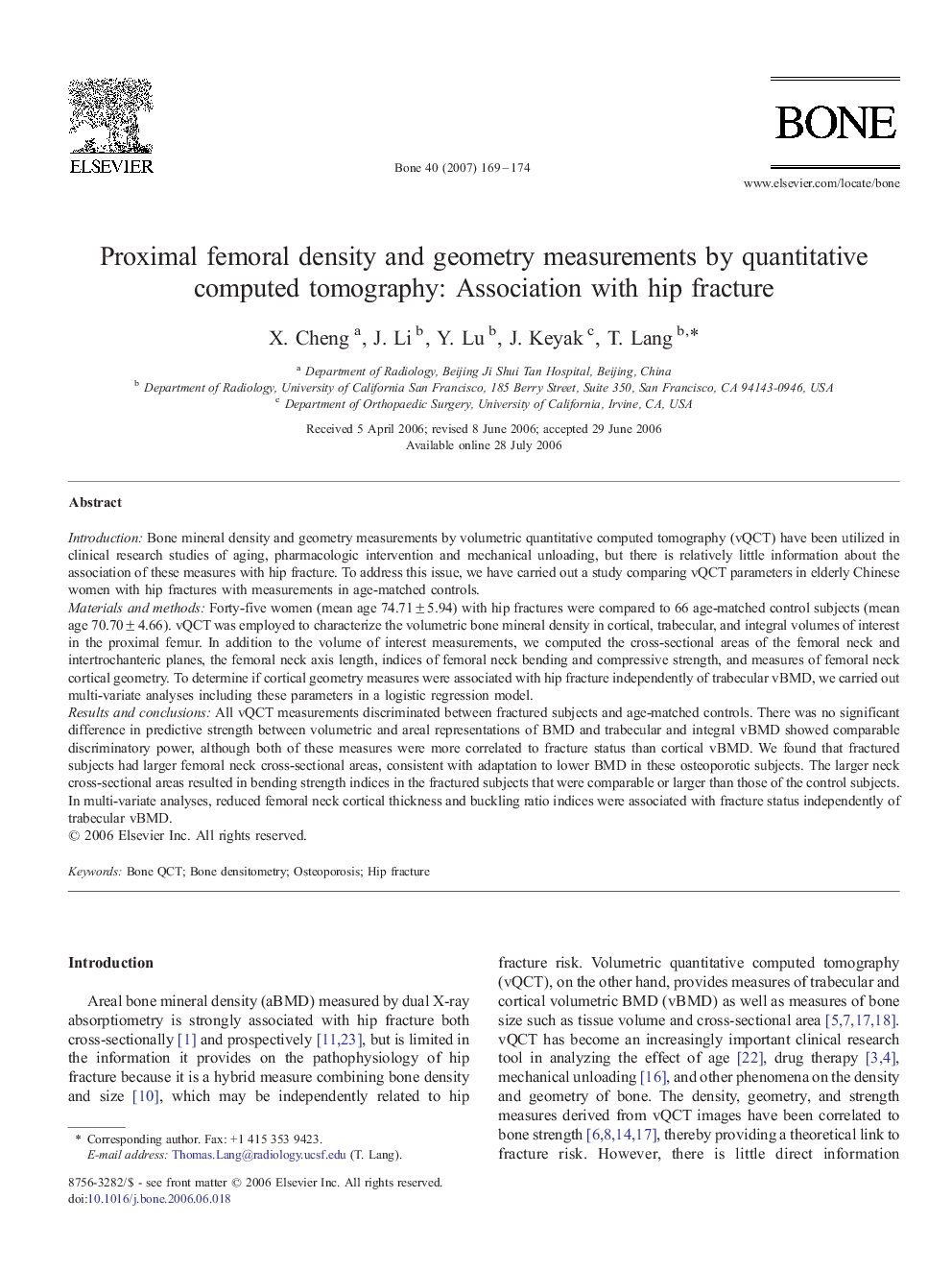| کد مقاله | کد نشریه | سال انتشار | مقاله انگلیسی | نسخه تمام متن |
|---|---|---|---|---|
| 2782913 | 1153362 | 2007 | 6 صفحه PDF | دانلود رایگان |

IntroductionBone mineral density and geometry measurements by volumetric quantitative computed tomography (vQCT) have been utilized in clinical research studies of aging, pharmacologic intervention and mechanical unloading, but there is relatively little information about the association of these measures with hip fracture. To address this issue, we have carried out a study comparing vQCT parameters in elderly Chinese women with hip fractures with measurements in age-matched controls.Materials and methodsForty-five women (mean age 74.71 ± 5.94) with hip fractures were compared to 66 age-matched control subjects (mean age 70.70 ± 4.66). vQCT was employed to characterize the volumetric bone mineral density in cortical, trabecular, and integral volumes of interest in the proximal femur. In addition to the volume of interest measurements, we computed the cross-sectional areas of the femoral neck and intertrochanteric planes, the femoral neck axis length, indices of femoral neck bending and compressive strength, and measures of femoral neck cortical geometry. To determine if cortical geometry measures were associated with hip fracture independently of trabecular vBMD, we carried out multi-variate analyses including these parameters in a logistic regression model.Results and conclusionsAll vQCT measurements discriminated between fractured subjects and age-matched controls. There was no significant difference in predictive strength between volumetric and areal representations of BMD and trabecular and integral vBMD showed comparable discriminatory power, although both of these measures were more correlated to fracture status than cortical vBMD. We found that fractured subjects had larger femoral neck cross-sectional areas, consistent with adaptation to lower BMD in these osteoporotic subjects. The larger neck cross-sectional areas resulted in bending strength indices in the fractured subjects that were comparable or larger than those of the control subjects. In multi-variate analyses, reduced femoral neck cortical thickness and buckling ratio indices were associated with fracture status independently of trabecular vBMD.
Journal: Bone - Volume 40, Issue 1, January 2007, Pages 169–174